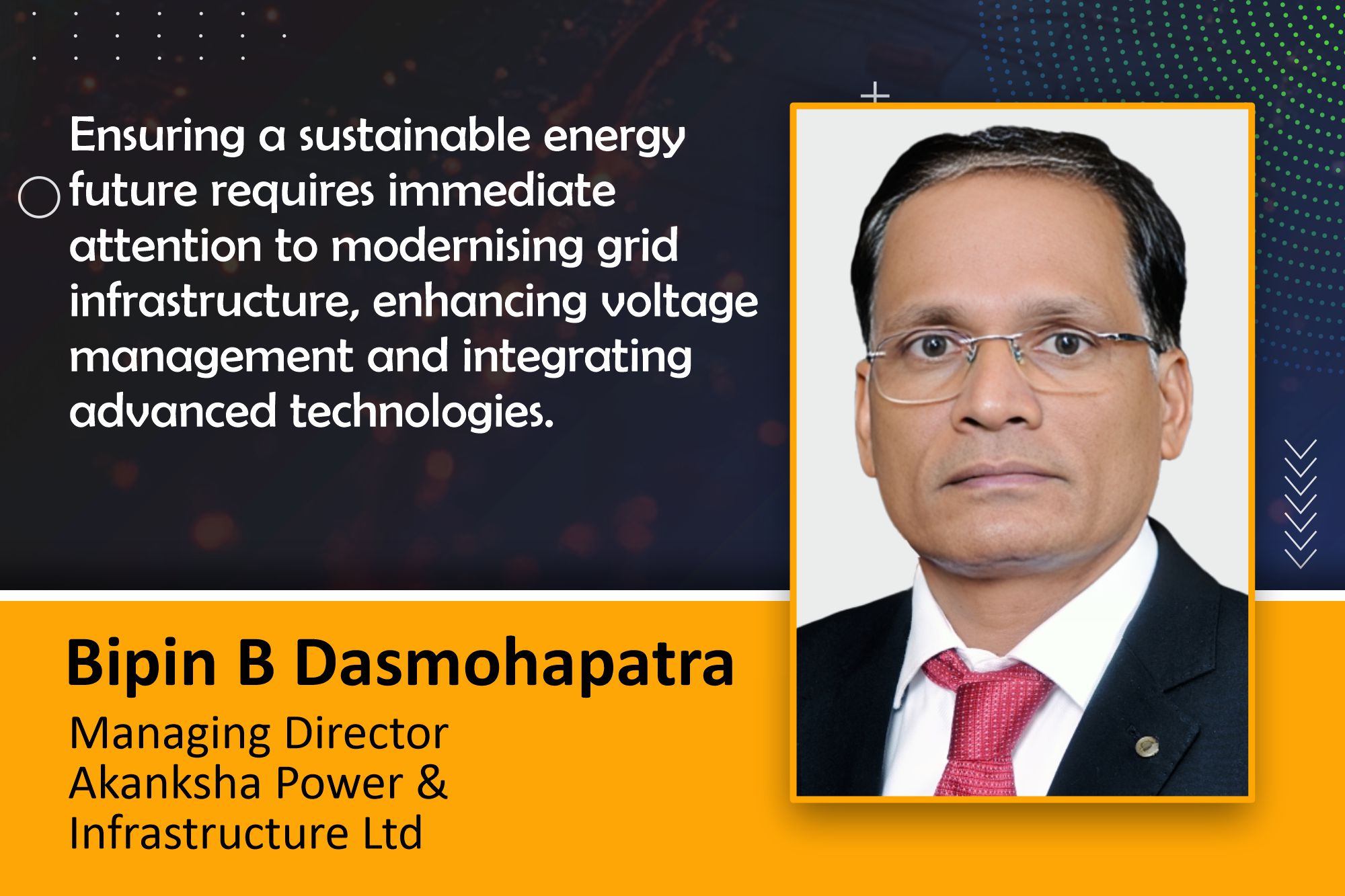Comprehensive end-to-end solution crucial for improving DISCOMs’ operational efficiency
By EPR Magazine Editorial January 23, 2025 12:48 pm IST
By EPR Magazine Editorial January 23, 2025 12:48 pm IST

The transition to a sustainable, electrified future is critical for addressing climate change, and DISCOMs play a pivotal role in this journey. However, they face significant challenges, including poor financial health, voltage stability issues, and inefficiencies in electricity distribution. A comprehensive, integrated approach is needed to overcome these barriers, combining advanced technologies like smart grids, decentralised power systems, and modern grid infrastructure. By focusing on performance outcomes rather than just budget allocations, policymakers can ensure better access to the right technologies, promoting collaboration and innovation. This will enhance grid resilience, reduce energy losses, and facilitate the seamless integration of renewable energy.
Bipin Dasmohapatra, managing director of Akanksha Power & Infrastructure Ltd, shares more insights on interacting with EPR.
How can DISCOMs leverage innovative smart meters to address losses and enhance billing efficiency for financial improvement?
The financial health of DISCOMs has been a persistent issue, primarily due to high technical losses, large-scale electricity theft, and poor billing and collection practices. Despite government initiatives, such as installing smart meters, these challenges continue to hamper performance. At Akanksha Power, a comprehensive end-to-end solution is crucial for improving DISCOMs’ operational efficiency. By leveraging advanced technology, we can streamline operations, enhance billing accuracy, and reduce losses, ultimately improving the financial health and sustainability of DISCOMs. The right technology will address existing inefficiencies and pave the way for long-term improvements in the power distribution sector.
How can DISCOMs address voltage stability challenges to ensure reliable integration of renewable energy for a sustainable electrified future?
The increasing demand for renewable energy and the global transition to an electrified future to combat climate change highlight the urgency of addressing infrastructure challenges. One critical issue lies with DISCOMs, which face significant challenges related to voltage stability. Ensuring a sustainable energy future requires immediate attention to modernising grid infrastructure, enhancing voltage management, and integrating advanced technologies. Strengthening grid resilience is essential to support the growing share of renewable energy, ensuring reliable supply and minimising disruptions. A collaborative effort among policymakers, industry stakeholders, and DISCOMs is crucial to overcoming these challenges and achieving a sustainable, electrified future.
How can smart grid integration with decentralised power systems improve reliability and sustainability in modern energy distribution networks?Integrating smart grids with decentralised power systems enhances distribution reliability, efficiency, and sustainability. Smart grids enable real-time monitoring, automation, and predictive maintenance, reducing outages and energy losses. Decentralised grids, powered by renewable sources like solar and wind, minimise dependency on centralised systems and lower transmission losses. Together, they support demand-response mechanisms, optimise energy flow, and accommodate distributed energy storage. This synergy fosters grid resilience, reduces carbon emissions, and promotes sustainable energy management, paving the way for a more robust and eco-friendly power distribution network.
How can policy priorities shift from budget allocation to performance outcomes, ensuring access to appropriate technologies for better results?
Policy and budget allocations aim to enhance performance, yet outcomes often fall short or turn negative due to a lack of appropriate technology. Prioritising performance outcomes over mere expenditure is crucial to ensure impactful results. Additionally, the high cost of participation in events like ELECREMA restricts access for small industries, limiting their opportunities for growth and exposure. The event should rotate across regional metro cities instead of being confined to one location to address this. This would make participation more affordable and inclusive, fostering innovation and collaboration at a broader scale while supporting the growth of smaller enterprises.
We use cookies to personalize your experience. By continuing to visit this website you agree to our Terms & Conditions, Privacy Policy and Cookie Policy.